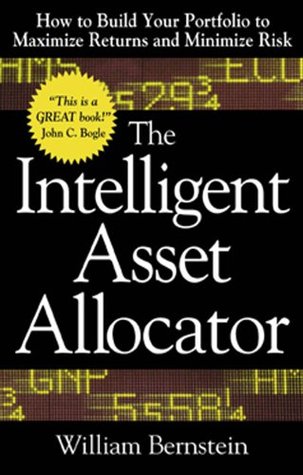More on this book
Kindle Notes & Highlights
Read between
December 19 - December 31, 2018
The most important part of this book is Chapter 9, “Investment Resources.”
The coin toss also introduces the difference between the average and the annualized return of an asset.
It is the return that you must earn each and every year to equal the result of your series of differing annual returns.
The annualized and average return clearly are not the same.
The annualized return is always less than the average return.
You pay your bills with annualized return, not average return.
in the long run you are compensated for bearing risk. Conversely, if you seek safety, your returns will be low.
However, we know that what really counts is the annualized return (that is, the return which would be required each year to yield the same result).
This is done by calculating a standard deviation, or SD, which is a measure of the “scatter” of a set of numbers.
First and foremost, you should become familiar with this as a measure of risk.
Here the standard deviation of annual returns may be estimated by multiplying the quarterly return SD by 2 or the monthly return SD by 3.46.
In fact, one sign of a dangerously overbought market is a generalized underappreciation of the risks inherent in it.
more closely approximate a lognormal distribution.
you should not commit a sizable portion of your disposable income to an investment without a good idea of its expected return (performance) and risk (repair record).
at least 20 or 30 years of data are necessary to get a good idea of expected return.
You can get a good idea of asset risk by looking at monthly data for not much more than 5 or 10 years.
“the SBBI”).
We shall consider five assets: large and small U.S. stocks, and 30-day, 5-year, and 20-year Treasury securities.
Table 2-1. Asset Classes from 1926 to 1998
A security of less than 1 year is called a Treasury bill, or more simply, a T-bill. An obligation of 1 to 10 years is called a note, and of greater than 10 years a bond. Treasury Bills.
Short of national destruction, there is no possibility of default, although Uncle Sam occasionally prints money to make good.
A note or bond yielding a fixed coupon will decline in market value when interest rates rise, and the longer the maturity of the note or bond the worse the damage.
At a maturity of five years, the loss in principal market value can exceed the coupon of the note or bond, resulting in a negative total return for the year.
the real (inflation-adjusted) return was about 2%.
That part of the risk that disappears with diversification is called nonsystematic risk,
They are a favorite investment of insurance companies, which have long-lived fixed liability commitments that can be precisely offset with long bonds.
Large Company Common Stocks.
“large stocks,” “the S&P,” or “the S&P 500.”
Small Company Stocks.
places them in the bottom 20%
the effects of longer holding periods for large company U.S. stocks.
stocks are to be held for the long term. Don’t worry too much about the short-term volatility of the markets; in the long run, stocks will almost always have higher returns than bonds.
the longer one’s time horizon, the less likely the risk of loss.
This graph shows that when you measure risk as the standard deviation of end wealth, stocks actually become riskier with time.
Probably the most relevant definition of risk is the likelihood of running out of money.
The plain fact of the matter is that no investor, no matter how skilled, ever avoids bone-crushing losses at times, even when undertaking the most prudent market risks.
An investor is aiming, or should be aiming, primarily at long period results, and should be solely judged by these.
Fortunately, there are ways to lessen the raw risks of single assets, and there are even times when the addition of a small amount of a very risky asset to your portfolio will actually lessen its volatility.
There is great advantage to be gained from wide diversification among as many potential investment categories as possible.
The main reason for this is that they are perceived to be inflation hedges, and likely to do well in an inflationary environment in which other stocks and bonds would be adversely affected.
much of the risk of precious metals and REITs can be “diversified away.”
Most assets lie on a fairly straight line, showing clearly the direct relationship between risk and return.
estimation of future asset returns.
(so-called reinvestment risk).
Still, even with significant long-term bond market volatility the long-term return will not be more than a few percent off the coupon rate.
Long bonds also nicely illustrate the dangers of relying on historical returns too heavily.
(Bond prices move in the direction opposite interest rate changes.)
discounted dividend method.
Return = dividend yield + dividend growth rate + multiple change
The term multiple change refers to the increase or decrease in the overall dividend rate.


